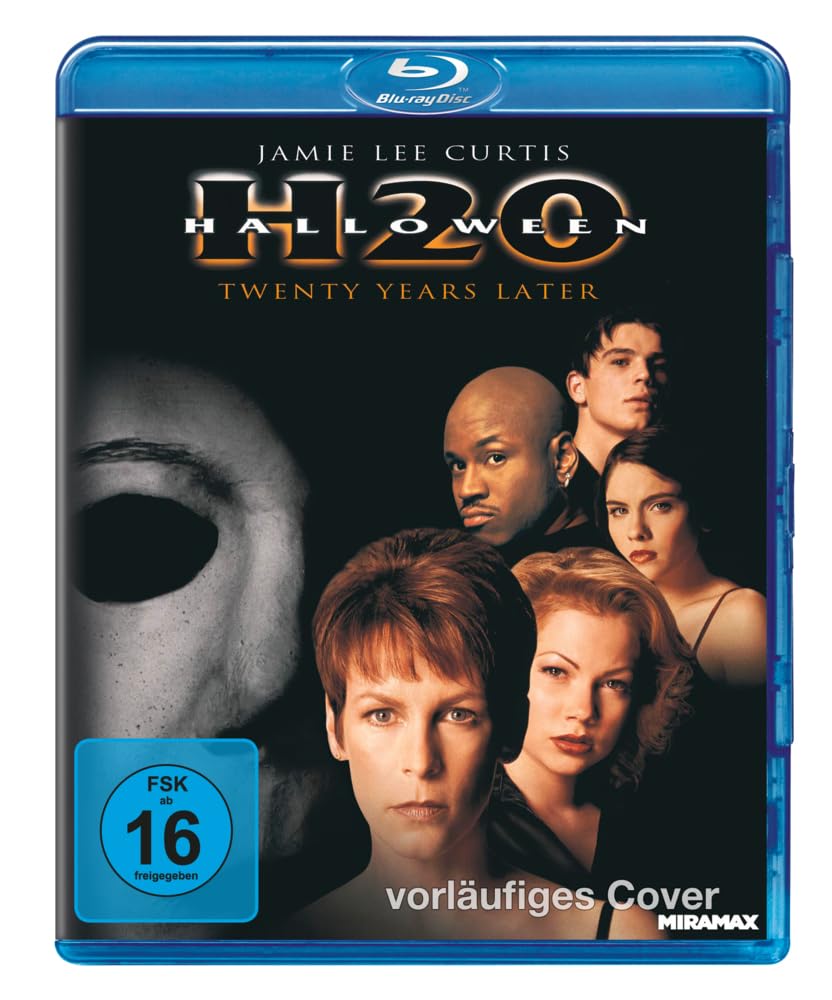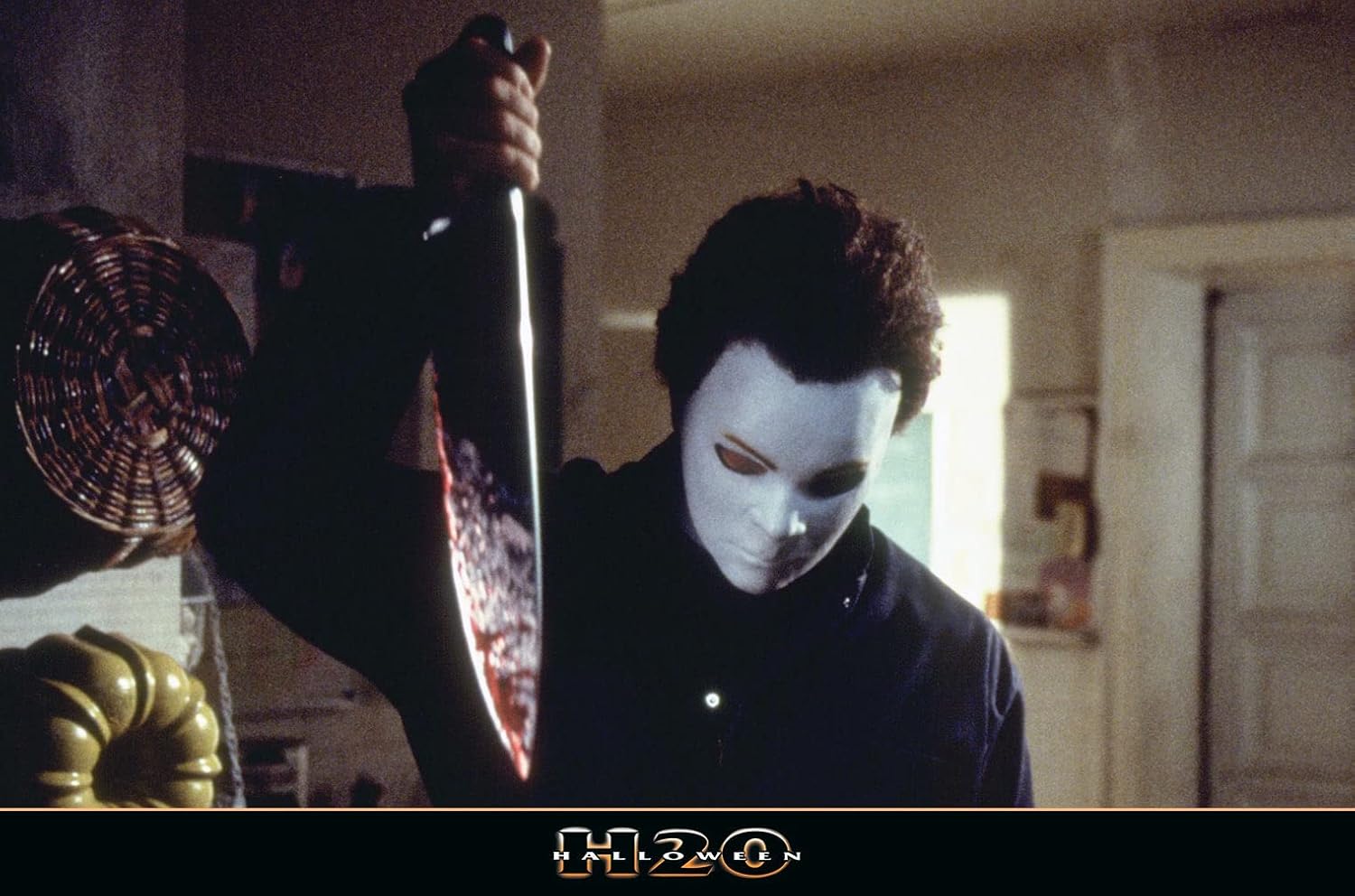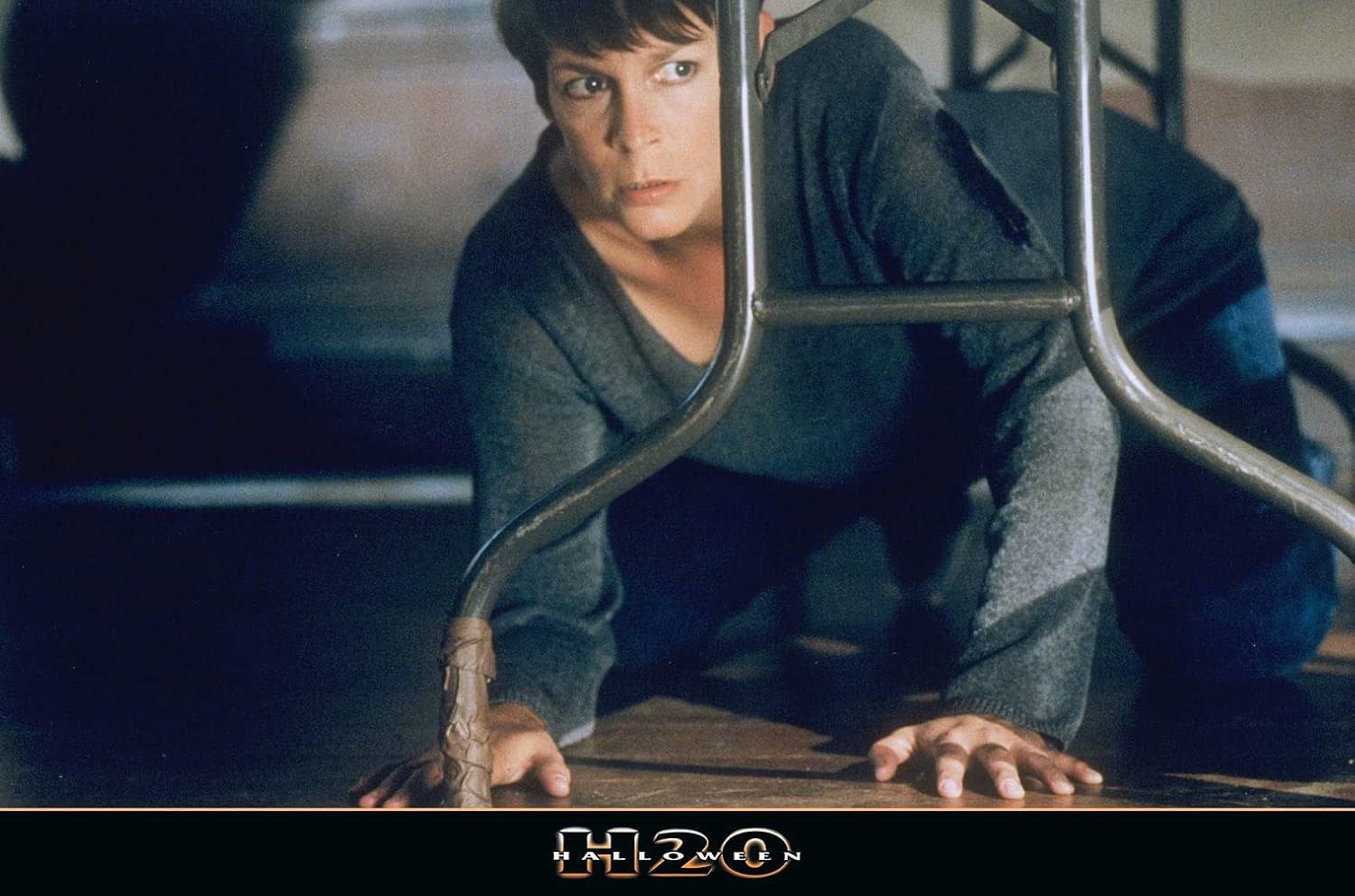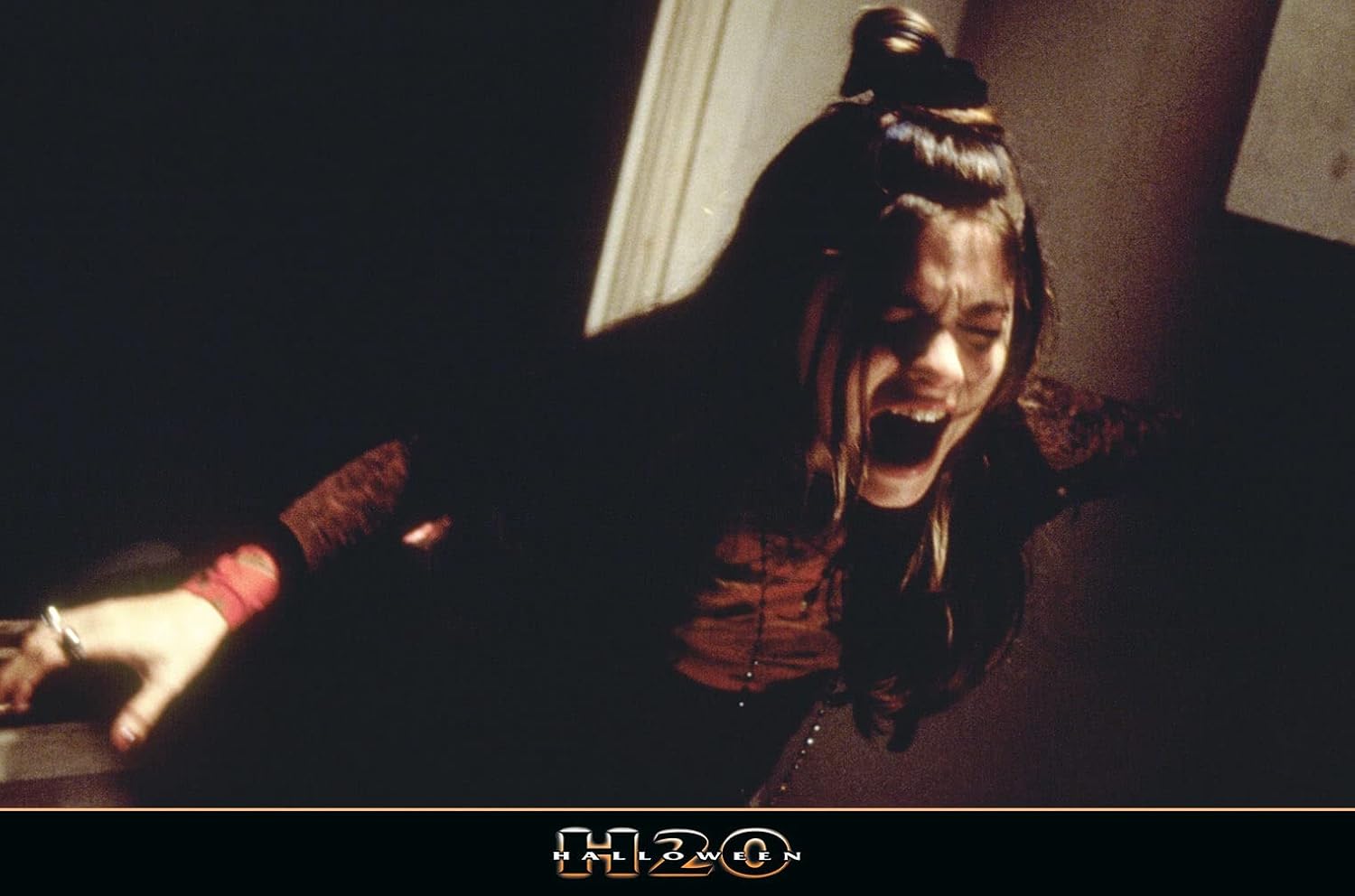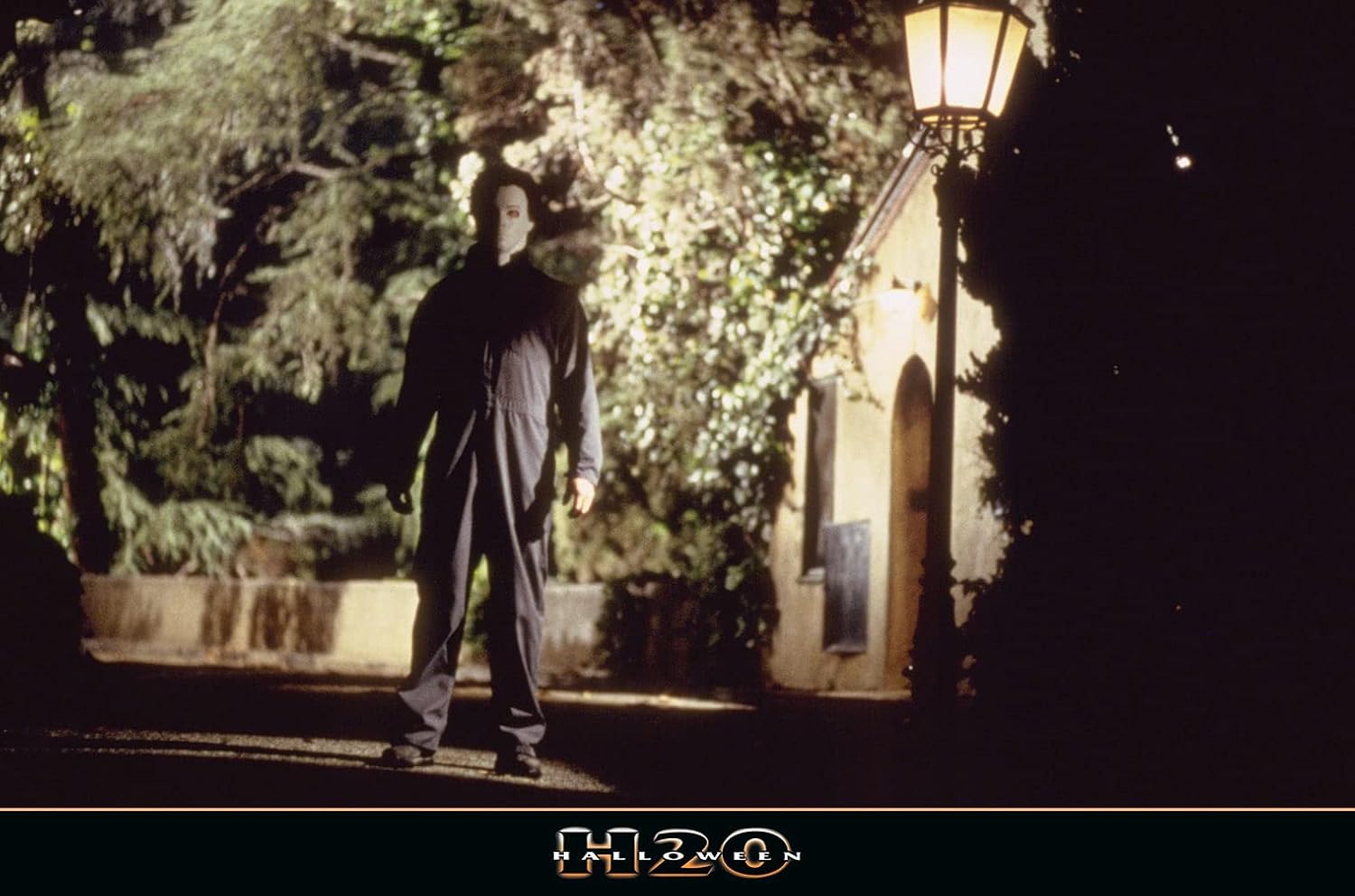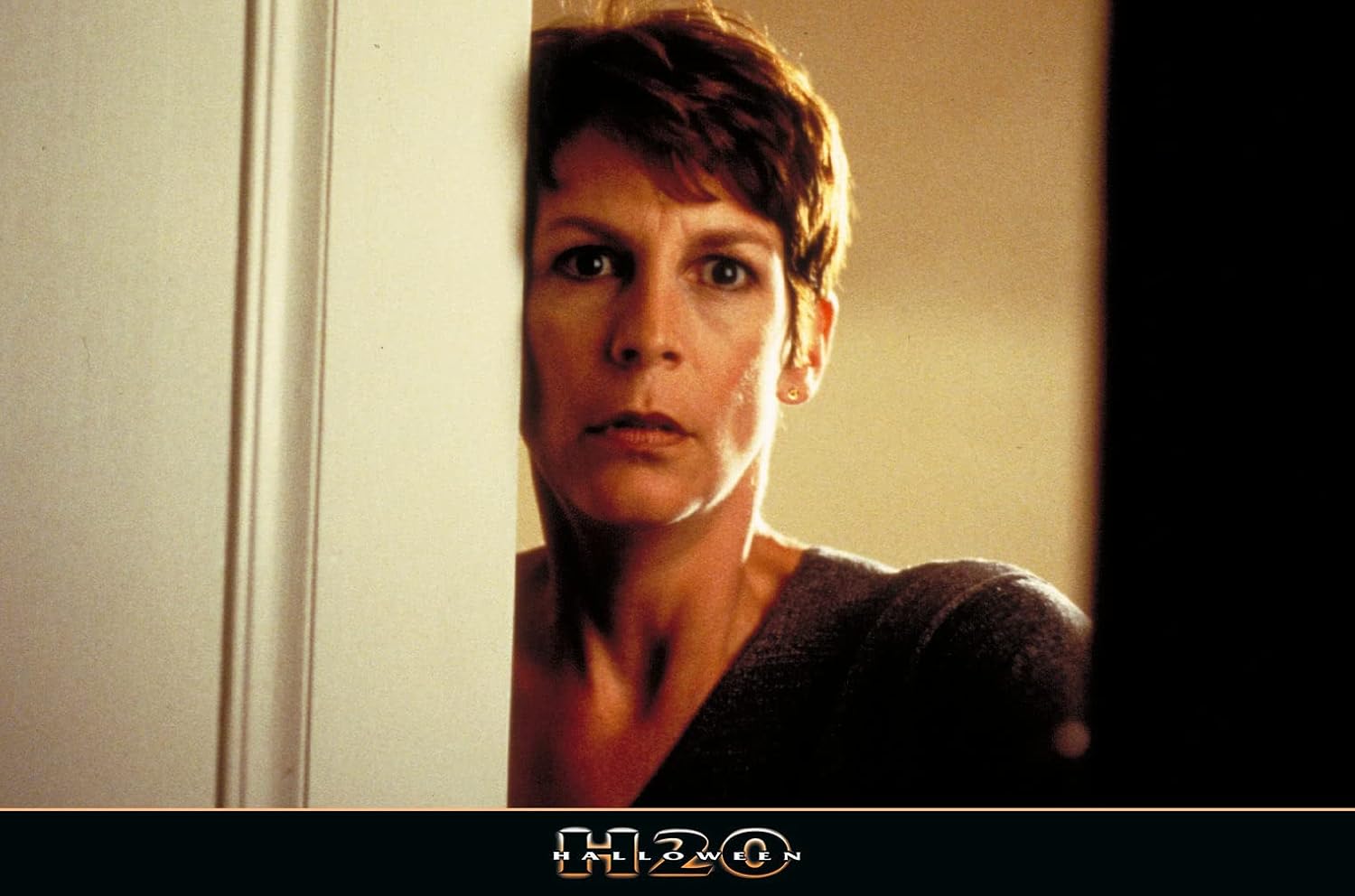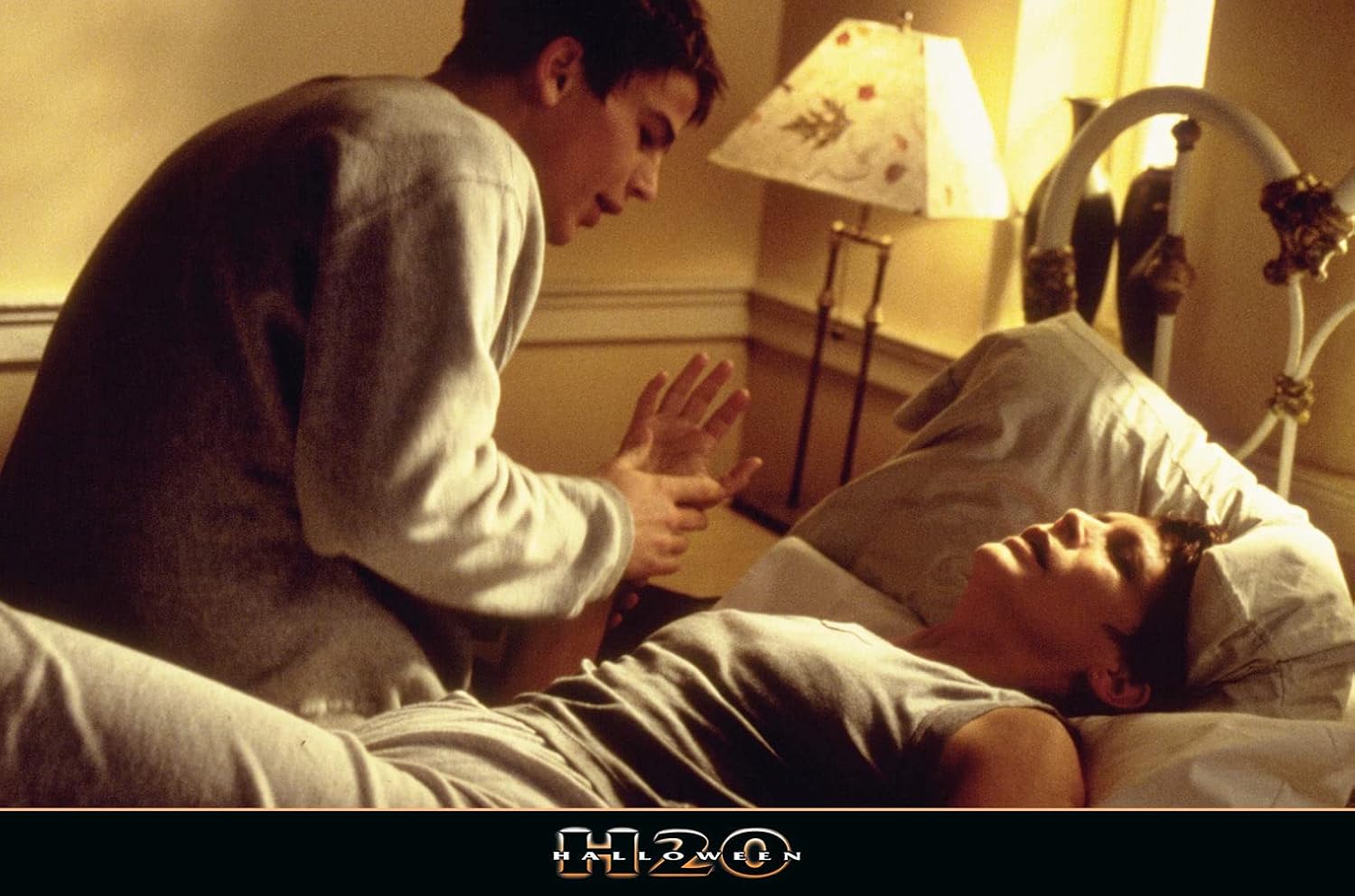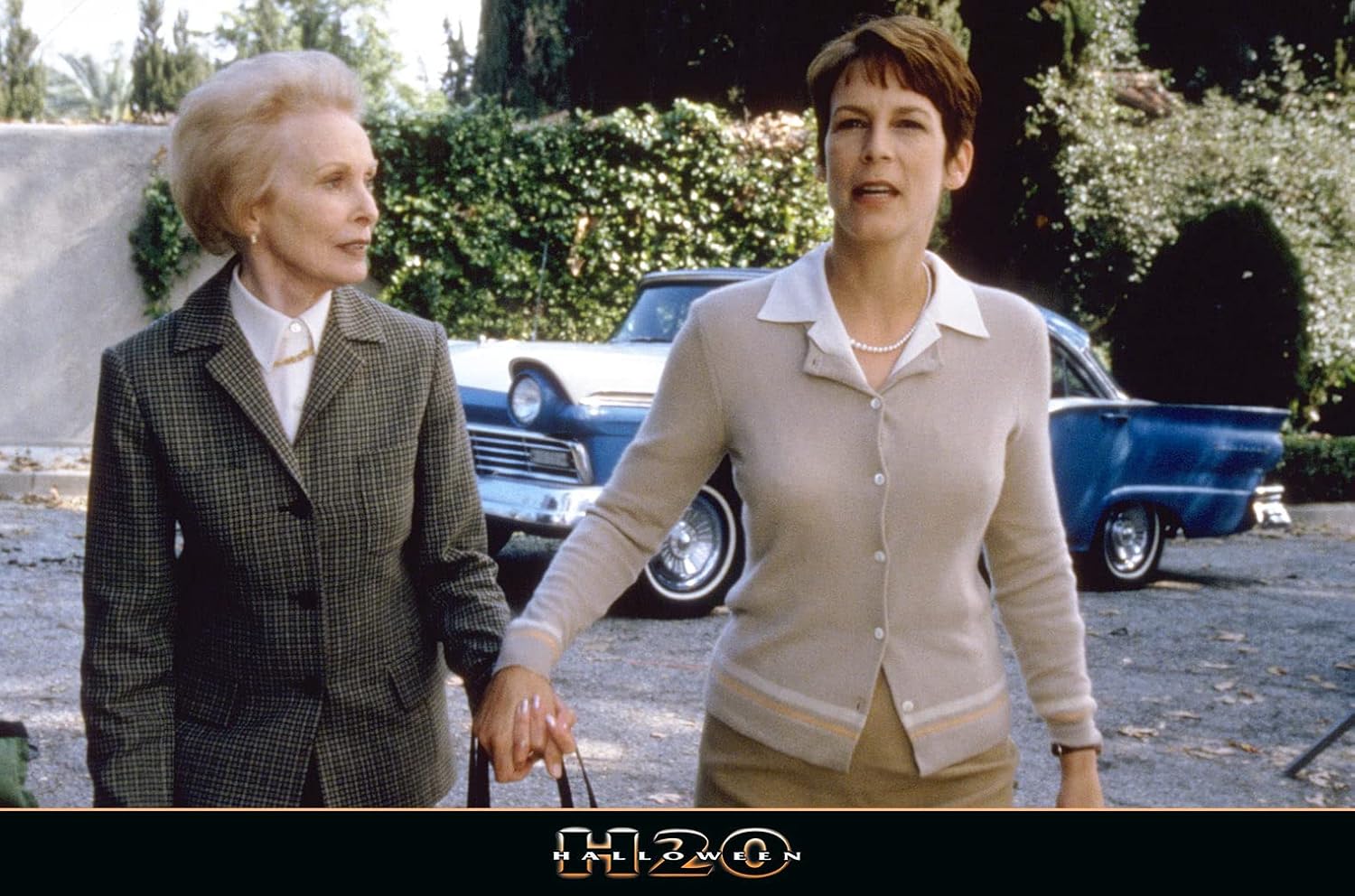
Halloween: H20 Review Halloween H20 – Oemiu
Halloween H20: A Deep Dive into the Michael Myers Comeback
The year is 1998. Grunge is fading, boy bands are ascending, and horror, while not dead, isn’t exactly setting the box office ablaze. Enter Halloween H20: 20 Years Later, a film that promised a return to form for the Michael Myers saga. The ninth installment in the franchise, H20, was positioned as a direct sequel to Halloween II, conveniently ignoring the events of parts 4, 5, and 6. This retcon was a deliberate move, designed to bring back Jamie Lee Curtis as Laurie Strode, offering her a chance to confront her trauma and finally put an end to her brother’s reign of terror. But did it succeed? Did Halloween H20 recapture the magic of John Carpenter’s original? Let’s delve into what made this film a pivotal, if somewhat controversial, entry in the slasher canon.
A Legacy Reborn: Laurie Strode’s Trauma and Transformation
One of the most compelling aspects of Halloween H20 is its focus on Laurie Strode. Not the perpetually victimized Laurie from the early films, but a woman scarred by her past, living under an assumed name as Keri Tate, headmistress of a private boarding school in California. The film smartly explores the long-term psychological effects of trauma, showing Laurie as an alcoholic, struggling with anxiety, and deeply overprotective of her son, John. Her fear is palpable, a constant shadow lurking beneath the surface of her seemingly normal life. The film doesn’t shy away from showing the raw, unfiltered pain that Laurie has endured. This isn’t just about a masked killer; it’s about the enduring consequences of violence and the struggle to overcome profound psychological wounds.
This deeper characterization of Laurie is a significant departure from many slasher films, where victims are often portrayed as one-dimensional and expendable. Curtis’s performance is particularly strong, conveying both vulnerability and resilience. She’s not just running and screaming; she’s actively fighting her demons, both literal and figurative. The film also explores the complicated relationship between Laurie and her son. He’s a typical teenager, wanting freedom and resenting his mother’s overbearing nature. This dynamic adds another layer to the story, highlighting the challenges of parenting in the shadow of trauma. The threat of Michael’s return isn’t just a danger to Laurie; it’s a threat to her family, to the fragile stability she’s worked so hard to build.
Consider this: The success of Halloween H20 can be partially attributed to its savvy marketing, promoting not just a slasher film, but a reunion between Curtis and Myers. This nostalgia factor undoubtedly drew in a significant audience. But beyond the marketing, the film tapped into a cultural zeitgeist, a growing interest in exploring the psychological impact of trauma. Films like Scream had already begun to deconstruct the slasher genre, and Halloween H20 took this a step further by focusing on the internal struggles of its protagonist. This made Laurie Strode a more relatable and sympathetic character, and it elevated the film above the typical slasher fare. Finding the right balance with Halloween H20 streaming was an important consideration for the studio and fans alike.
Slasher Sensibilities: The Thrills and Chills of H20
While character development and psychological depth are important, Halloween H20 is, at its core, a slasher film. And in that regard, it delivers a solid dose of thrills and chills. Michael Myers is back, stalking the halls of the boarding school, picking off students and faculty with his signature silent menace. The film employs classic slasher tropes: jump scares, suspenseful stalking sequences, and gruesome kills. But it also adds a touch of modern flair, with a faster pace and a more aggressive Michael. He’s not just lurking in the shadows; he’s actively hunting his prey.
The boarding school setting provides a claustrophobic and isolated backdrop for the action. The long hallways, darkened classrooms, and secluded dorm rooms create a sense of unease and vulnerability. The film effectively uses sound and lighting to heighten the tension, making the audience feel like they’re right there with the characters, waiting for Michael to strike. The kill sequences, while not overly graphic by modern standards, are still effective in their brutality. Michael is a force of nature, unstoppable and relentless. He dispatches his victims with a cold efficiency, leaving a trail of blood and terror in his wake. The use of the iconic Michael Myers theme music, updated for the late 90s, adds to the nostalgic feel of the film and serves as a constant reminder of the danger that lurks around every corner.
However, some critics have argued that Halloween H20 relies too heavily on jump scares and lacks the suspense and atmosphere of the original film. While it’s true that H20 is more action-oriented than its predecessors, it still manages to deliver a satisfying slasher experience. The film is well-paced, with a good balance of character development and scares. And the final confrontation between Laurie and Michael is a tense and satisfying climax. Many fans were particularly interested in Halloween H20 ending explained, due to the decisive nature of the climax.
| Feature | Halloween (1978) | Halloween H20 (1998) |
|---|---|---|
| Pacing | Slow burn, suspenseful | Faster, more action-oriented |
| Kill Sequences | More implied violence | More explicit violence |
| Character Development | More focus on atmosphere | More focus on Laurie Strode’s trauma |
| Michael Myers | Silent, lurking presence | More aggressive, active hunter |
| Overall Tone | Classic horror | Modern slasher |
The Retcon Controversy: Ignoring the Past
One of the most debated aspects of Halloween H20 is its decision to retcon the events of Halloween 4, 5, and 6. These films introduced Jamie Lloyd, Laurie Strode’s daughter, who became the new target of Michael Myers. By ignoring these films, Halloween H20 essentially erased Jamie from the timeline, a decision that angered many fans. The rationale behind this retcon was to bring back Laurie Strode and create a more direct connection to the original films. The producers felt that Jamie Lloyd had become a distraction from the core story of Laurie and Michael. They wanted to focus on the psychological battle between these two characters, and they believed that Jamie’s presence would complicate things.
However, the retcon also created some plot holes and inconsistencies. For example, the film doesn’t explain what happened to Jamie, leaving fans to speculate about her fate. Some have suggested that she died off-screen, while others believe that she simply disappeared from Laurie’s life. Regardless of the explanation, the retcon remains a controversial decision that continues to be debated by fans. Some argue that it was necessary to revitalize the franchise, while others believe that it betrayed the established continuity. The decision to disregard the established canon was driven by a desire to simplify the narrative and focus on the core dynamic between Laurie and Michael. This strategic move aimed to recapture the essence of the original films and appeal to a wider audience, particularly those who had grown weary of the increasingly convoluted storylines of the sequels. This is a sentiment echoed by some fans who eagerly looked forward to the Halloween H20 release date.
Ultimately, the success of a retcon depends on how well it’s executed. In the case of Halloween H20, the retcon is somewhat clunky and unsatisfying. It feels like a shortcut, a way to avoid dealing with the complexities of the existing continuity. While the film does benefit from the return of Laurie Strode, it also suffers from the loss of Jamie Lloyd, a character that many fans had grown to care about. This strategic choice reflects the often-difficult balance between honoring established lore and rejuvenating a franchise for new and existing audiences.
Legacy and Impact: H20’s Place in the Franchise
Despite its flaws and controversies, Halloween H20 remains a significant entry in the Halloween franchise. It marked the return of Jamie Lee Curtis, revitalized the character of Laurie Strode, and offered a compelling exploration of trauma. The film was a commercial success, proving that there was still an appetite for Michael Myers. It also paved the way for future sequels, including Halloween: Resurrection, which unfortunately undid much of the good work of H20. The impact of Halloween H20 extends beyond its box office success. The film helped to redefine the slasher genre, incorporating elements of psychological horror and character-driven storytelling. It also inspired other horror films to explore the long-term effects of trauma on their characters.
However, Halloween H20 also has a somewhat complicated legacy. While it’s generally considered to be one of the better sequels in the franchise, it’s often overshadowed by the original film and the more recent reboot trilogy. Some fans feel that Halloween H20 is too derivative of the original, while others criticize its retcon and its handling of the Michael Myers character. Despite these criticisms, Halloween H20 remains a popular and influential film. It’s a testament to the enduring appeal of the Halloween franchise and the power of Jamie Lee Curtis’s performance. Its enduring popularity speaks to the film’s ability to resonate with audiences who appreciate a blend of classic slasher elements and a more nuanced exploration of psychological themes. It’s not unusual to find fans deeply invested in the nuances of Halloween H20 cast and their respective performances.
Ultimately, Halloween H20 is a flawed but fascinating film. It’s a product of its time, reflecting the trends and sensibilities of the late 90s. It’s a film that both celebrates and deconstructs the slasher genre. And it’s a film that continues to be debated and discussed by fans to this day. Its place in the franchise may be somewhat contested, but its influence on the slasher genre and its enduring appeal are undeniable. It is an important touchstone in the evolution of the series, showcasing how legacy characters can be reinterpreted and how classic horror tropes can be reimagined for contemporary audiences.
FAQ
What is Halloween H20 about?
Halloween H20: 20 Years Later is the seventh film in the Halloween franchise (if you ignore parts 4-6!). It picks up 20 years after the events of the first two films. Laurie Strode, now living under the assumed name of Keri Tate, is the headmistress of a private boarding school in California. She’s still haunted by the trauma of her past and struggling with anxiety and alcoholism. On Halloween night, Michael Myers resurfaces and begins stalking Laurie and her son, John. The film follows Laurie as she confronts her past and fights to protect herself and her son from her relentless brother. It’s a story about trauma, survival, and the enduring power of family.
Why is Halloween H20 called “20 Years Later?”
The title “20 Years Later” refers to the fact that the film takes place exactly 20 years after the events of the original Halloween (1978). This was a marketing strategy to highlight the return of Jamie Lee Curtis as Laurie Strode and to emphasize the film’s connection to the original. The title also serves as a reminder of the long-lasting impact of Michael Myers’s actions on Laurie’s life. It underscores the idea that trauma can linger for decades and that the past can never truly be escaped. This focus on the passage of time and its impact on the characters is a key theme of the film, further solidifying the significance of the title.
What is the significance of Laurie Strode in Halloween H20?
Laurie Strode is the central character of Halloween H20. Her character arc is a major departure from the earlier films, where she was primarily portrayed as a victim. In H20, Laurie is a survivor, struggling to overcome the trauma of her past. She’s a complex and flawed character, battling her demons and fiercely protective of her son. The film explores the long-term psychological effects of violence on her, showing her as an alcoholic, plagued by nightmares, and constantly living in fear. Her return in H20 revitalized the franchise and gave audiences a chance to see a different side of Laurie Strode. She’s not just running and screaming; she’s actively fighting back, both against Michael Myers and against her own inner demons.
How does Halloween H20 connect to the original Halloween?
Halloween H20 is presented as a direct sequel to Halloween II (1981), effectively ignoring the events of Halloween 4, 5, and 6. This retcon was a deliberate attempt to bring the franchise back to its roots and to focus on the core relationship between Laurie Strode and Michael Myers. The film directly references the events of the original Halloween, showing flashbacks and highlighting the enduring trauma that Laurie experienced on that night. The return of Jamie Lee Curtis as Laurie Strode also serves as a direct link to the original, creating a sense of nostalgia and familiarity for fans. This connection to the original is crucial to the film’s success, as it taps into the iconic status of the first film and reestablishes Laurie and Michael as the central figures in the franchise.
What is the controversy surrounding the ending of Halloween H20?
The original ending of Halloween H20 was designed to be definitive, with Laurie Strode seemingly decapitating Michael Myers. However, this ending was later retconned in Halloween: Resurrection (2002), which revealed that Michael had switched places with a paramedic before Laurie could kill him. This retcon angered many fans, who felt that it undermined the impact of H20 and diminished Laurie Strode’s character. The decision to bring Michael Myers back from the dead was seen as a betrayal of the film’s themes of trauma and closure. Many felt it cheapened the intense emotional journey Laurie had undertaken in Halloween H20. The re-establishment of Michael as an unstoppable force arguably undermined the narrative’s resolution, leading to widespread disappointment and debate among the fanbase.
Is Halloween H20 a good Halloween sequel?
Whether Halloween H20 is a “good” sequel is subjective and depends on individual preferences. Generally, it’s considered one of the better sequels in the franchise. It benefits from the return of Jamie Lee Curtis, a compelling story about trauma, and a faster-paced, more modern slasher sensibility. However, it’s also criticized for its retcon, its reliance on jump scares, and its lack of suspense compared to the original. Some fans also feel that it diminishes the character of Michael Myers by making him more aggressive and less mysterious. Ultimately, Halloween H20 is a flawed but entertaining film that offers a decent dose of scares and a satisfying conclusion to Laurie Strode’s story (at least until Resurrection came along). Its success lies in blending familiar elements with a contemporary sensibility, marking a significant chapter in the franchise’s evolution.
How does Halloween H20 compare to other Halloween sequels?
Which Halloween film is the best sequel?
Compared to other Halloween sequels, Halloween H20 stands out for its focus on Laurie Strode’s trauma and its attempts to modernize the slasher genre. It’s generally considered superior to Halloween 4, 5, and 6, which are often criticized for their convoluted storylines and less compelling characters. However, it’s not as highly regarded as the original Halloween or the more recent reboot trilogy, which are praised for their atmosphere, suspense, and grounded realism. Halloween H20 falls somewhere in the middle, offering a solid slasher experience with some interesting character development, but ultimately falling short of the brilliance of the original. The sequels that followed are very much a mixed bag in terms of the reception they received, as well.
